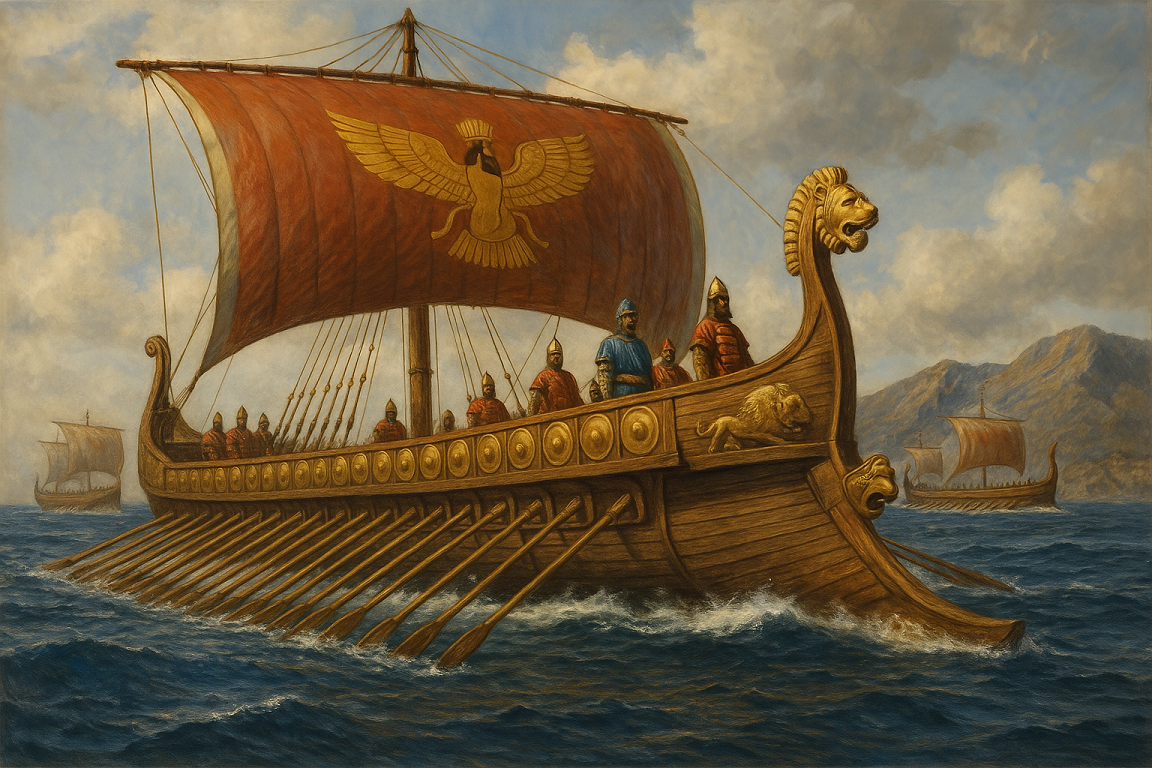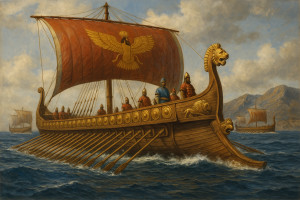Explore the vast expanse of maritime history, emphasizing the pivotal role of Persian naval power in shaping ancient seafaring and trade networks.
How Did Ancient Civilizations Command the Seas?
The world’s oceans have long served as conduits for exploration, trade, and conquest. Among the ancient civilizations that harnessed the power of the seas, the Persians stand out for their strategic naval innovations and expansive maritime endeavors. This article delves into the evolution of maritime history, highlighting the significant contributions of the Persian Empire.
The Dawn of Seafaring
Maritime history traces humanity’s relationship with the seas—from rudimentary rafts to sophisticated fleets. Early civilizations recognized the sea’s potential for:
-
Trade: Facilitating the exchange of goods and culture.
-
Exploration: Discovering new lands and resources.
-
Warfare: Projecting power and securing territories.
The Persian Empire’s Maritime Legacy
Establishment of Naval Power
The Persian Empire, under leaders like Darius I, transformed from a land-centric dominion to a formidable maritime force. Recognizing the strategic importance of naval supremacy, Darius I initiated the development of a navy to protect and expand trade routes along the Persian Gulf and the Indian Ocean.
Composition and Strategy
Rather than solely relying on native resources, the Persians integrated expertise from subject nations:
-
Phoenicians: Renowned shipbuilders and sailors.
-
Egyptians and Greeks: Provided additional maritime knowledge and manpower.
This amalgamation led to a diverse and powerful fleet capable of both trade and military operations.
Pivotal Naval Engagements
The Battle of Salamis (480 BCE)
A defining moment in naval warfare, the Battle of Salamis saw the Persian fleet, commanded by King Xerxes, confront a coalition of Greek city-states. Despite their numerical superiority, the Persians were defeated due to the Greeks’ strategic maneuvering within the narrow straits of Salamis. This loss curtailed Persian expansion into Europe and underscored the importance of naval tactics.
Maritime Trade and Cultural Exchange
The Persian Empire’s maritime endeavors facilitated extensive trade networks, connecting diverse regions and cultures. By securing sea routes, the Persians enabled the flow of goods, ideas, and technologies across their vast empire, fostering economic prosperity and cultural integration.
Evolution of Naval Technology
The Persian navy’s advancements included:
-
Ship Design: Incorporation of metallic blades on the prow for ramming enemy vessels.
-
Armaments: Deployment of mangonels to launch projectiles during engagements.
-
Logistics: Use of ships to construct pontoon bridges, demonstrating engineering prowess in military campaigns.
The Decline and Legacy
Post the Greco-Persian Wars, the Persian Empire’s naval dominance waned. However, their maritime strategies and innovations influenced subsequent naval powers, leaving an indelible mark on seafaring history.
FAQs: People Also Ask
What was the significance of the Persian navy in ancient times?
The Persian navy was instrumental in protecting trade routes, facilitating cultural exchange, and asserting the empire’s dominance across vast territories.
How did the Persians build their naval forces?
They collaborated with subject nations like the Phoenicians, Egyptians, and Greeks, leveraging their maritime expertise to construct a diverse and powerful fleet.
What led to the decline of Persian naval power?
Defeats in key battles, such as Salamis, and the logistical challenges of maintaining a vast empire contributed to the reduction of Persian naval influence.
Conclusion: Charting the Persian Influence on Maritime History
The Persian Empire’s foray into naval dominance showcases the transformative power of maritime prowess in shaping civilizations. Their strategic innovations and collaborative approach to naval development not only secured their trade routes but also set precedents for future maritime endeavors.


